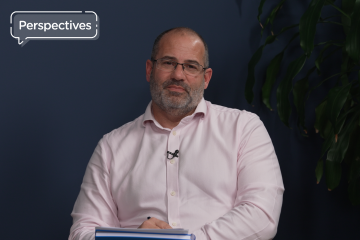
By Dr William Shanahan, Medical Director and Clinical Director of Addictions, Priory Hospital Roehampton.
What is an opioid?
Opioids can either be sourced synthetically or derived naturally from opium; the latter are referred to as opiates. Examples of opiates include:
- Morphine
- Codeine
- Thebaine
Heroin (diacetylmorphine) is an ester of morphine and, being more natural than the semi-synthetics, is still considered an opiate. Synthetic opioids include:
- Tramadol
- Methadone
- Pethidine
- Oxycodone
- Fentanyl
Why are opioids prescribed?
Opioids are mainly prescribed for pain relief, for example, patients may have cancer and need end-of-life care. It's critical that they're as pain-free as possible. Other patients requiring opioids may have painful musculoskeletal disorders, some have acute post-operative, or post infarction pain. Another group require opioid-substitution therapy for drug dependence and addiction, and some may use opioids during the detoxification process.
Who is using opioids?
Interestingly, just seven countries, including the UK and the USA, use 77% of the world’s available morphine, depriving poorer countries of a ready supply.
While an essential element of pain-relief in some circumstances, it cannot be forgotten that these are dangerous drugs. Over-prescribing may be contributing to a public health problem with enormous implications for clinical practice.
Last year alone in the UK:
- 50 million prescriptions for opioids were written
- This is a 35% increase over 10 years
- Overdoses have increased by 87% to 12,000
- Deaths have increased by 41%, to 2,000 each year
- There are three times more deaths in the North East of the UK than in London, partly reflecting a greater usage of opioids amongst the socially disadvantaged
Opioid use and fatalities
Of the 115,000 prescriptions written every day, five result in a death.
Overall, the most widely prescribed opioid is tramadol, although for people presenting with musculoskeletal pain, 47% receive codeine, or one of its analogues, co-codamol or co-dydramol.
Tramadol filled the void left by coproxamol, when it was withdrawn around 2005. It's more likely to be prescribed by GPs than non-steroidal anti-inflammatory drugs (NSAIDs), due to the fact that the latter may cause complications, especially in the older population. Tramadol may be perceived, in therapeutic terms, as lying somewhere between a weak and a strong opioid (an unhelpful distinction because this depends on dose), providing a false sense of security to prescribers hoping to avoid the stigma and risk of prescribing a ‘strong opioid’. Tramadol-related deaths amongst the opioid group increased from 9% in 2001 to 40% in 2011.
In 2017, the British Medical Journal (BMJ) published an interesting paper that focused on the opioid prescribing habits of 25 GP surgeries in London and the Midlands (Ashaye, et al., 2018). Researchers found that, of the 703 participants with musculoskeletal pain:
- 59% were prescribed opioids
- One quarter of participating patients were prescribed outside of National Institute for Health and Care Excellence (NICE) guidelines
- Fewer than three prescriptions were given to people each year
There's no real definition for ‘over-prescribing’. Patients want pain relief, and social media platforms are awash with indignant sufferers attesting to their dependent but not ‘addicted’ status, because they've been relatively pain-free for so many years. Over 1.5 million people with musculoskeletal problems receive opioids, and according to guidelines, 45% are over-prescribed, at a loss to the NHS of £100 million per year. This doesn't include the cost of managing the side effects of opioid addiction or reliance, or of treating people who've overdosed.
Fatalities from recreational opioid misuse are now overshadowed by medically prescribed opioid-related deaths. In the US, this accounts for 60% of opioid-related deaths. However, the opioid problem in the US isn't remotely comparable with the situation in the UK. As yet, we don't have marketing that directly promotes opioids to people, and our GPs don't receive huge financial incentives for prescribing particular drugs. Nevertheless, the prescription of opioids has increased by 60% in the last 10 years.
According to the Office for National Statistics (ONS):
- There were 4,359 deaths from drug poisoning in 2018
- This is up 16% from the previous year and is the highest annual increase since records began in 1993
- Deaths amongst men increased from 89.6 per million in 2017 to 105.4 per million in 2018 - two thirds of these were linked to the misuse of drugs
- Opioids, such as heroin and morphine, continue to be the most frequently mentioned substances on death certificates
Mixing opioids with other drugs
Incidentally, deaths involving cocaine doubled between 2015 and 2018. It's often impossible to tell the primary substance, as alcohol is frequently involved, and many people taking opioids are also using cocaine and other drugs, especially benzodiazepines. Since 2006, over half of all drug-poisoning deaths have involved opioids.
Any appearance of a decline in drug-related mortality is linked to a fall in cannabis usage. The addition of poly-substance misuse, club drug culture, chemsex, and new psychoactive and illicit substances (formerly known as ‘legal highs’), have only served to muddy the waters. With opioid-related deaths, toxicity is often not clearly related to dose as chronic use leads to tolerance. However, even if alcohol is present, the primary cause of death linked to an opioid is usually clear.
With the addition of cocaine, everything changes. Death may be due to serotonin syndrome or to hyperpyrexia. These cannot be diagnosed at post-mortem examination. Unless there's a cocaine-induced myocarditis, or an associate fulminant hepatic failure, the cause of death relies on eliminating other possible causes.
Just how strong is fentanyl?
Despite dire warnings from the US, and a blip here in 2017, deaths from fentanyl have remained relatively stable – 74 in both 2017 and 2018. It's likely that the analogue, carfentanil, contributed to most of these deaths. Police investigations uprooted a number of ‘dark web’ vendors who were subsequently arrested. Since then, there's been a dramatic decline in the number of deaths.
Fentanyl may be 80 times more potent than morphine.
Carfentanil may be many thousand times more potent still, and even 2mg can be fatal.
Respiratory depression and death can occur in under 2 minutes, as opposed to 20 or 30 minutes for heroin, giving time for the user to be treated. The prescription of ‘take-home’ naloxone must be considered here.
Multi-faceted treatment
The 2017 Drugs Strategy aimed to reduce the demand, restrict the supply and improve recovery by enhancing the quality of treatment and outcomes. The strategy asked for global action and new initiatives to respond to the emergence of new psychoactive and illicit substances.
The Care Quality Commission (CQC), recognising that opioid-related death was the third most common cause of preventable death for 15 to 49 year olds, asked that treatment be safe, effective, caring, responsive, and well-led. Treatment was found to be well-evidenced and to provide value for money. Every £1 spent on structured drug therapy saved the local society £2.50.
Unfortunately, the government’s attempts to reduce the supply of legal opioids has driven users back to street heroin, itself much cheaper and widely available. In 1 year, treatment presentations for opioid drug misuse has climbed from 120,000, to 250,000. Of these, 140,000 were linked to opioids and almost half (2/5) were for primary heroin use.
Treatment needs to be structured with:
- Goal-setting and planning
- Feedback and monitoring
- Social support
- Contingency management
- Cognitive behavioural therapy (CBT) and motivational interviewing are encouraged, along with evidence-based psycho-social interventions
In December 2018, Jeffrey Singer of the Cato Institute dared to reintroduce the policy of ‘harm reduction’. His paper, shifting the war on drugs, to the war on drug-related deaths (policy analysis 10858), quoted my own papers published with Nicky Metrebian, as far back as 1998 and 2001, suggesting that it was feasible to prescribe opioids safely to some users and thereby to reap health and social gains. Others take this even further; states in the US where cannabis is legalised have a 25% lower rate of opioid painkiller overdose deaths. It may be asked, is it time to look at cannabinoids as a reasonable substitute for opioid pain relief?
Adverse effects of using opioids for pain management
Overall, there's a lack of evidence supporting the efficacy of opioid prescribing in the management of non-malignant pain. Treatment with opioids can lead to a plethora of adverse effects, including depression, anxiety, headache, hyperalgesia, inadvertent overdose, diversion, coma and even death.
Remember:
- Prescribing daily oral morphine equivalents of between 50 and 99mg increases the risk of overdose by 3.7 times
- Prescribing over 100mg of morphine equivalent increases the risk of overdosing ten-fold
Dr Shanahan is the Medical Director for Private Practice as well as Clinical Director for Addictions at Priory Hospital Roehampton. He has a wealth of experience in psychiatry and addictions. Roehampton is one of our specialist addiction treatment hospitals and has specialist heroin and prescription drug detoxification and treatment programmes.
References:
- Tomi Ashaye et al. Opioid prescribing for chronic musculoskeletal pain in Uk Primary Care: Results from a cohort analysis of the COPERS Trial. BMJ Open 2018;8:e019491
- Jeffrey A Singer. Harm Reduction: Shifting the war on drugs to the war on drug-related deaths. CATO Institute. December 13 2018 Policy analysis No. 858
- Metrebian N, Shanahan W, et al (1998) The Feasibility of prescribing injectable heroin and methadone to opiate-dependent drug users: associated health gains and harm reduction.
Medical Journal of Australia Vol 168, 596-600 - Metrebian N, Shanahan W, et al, (201) Prescribing the drug of choice to opiate-dependent users Drug and Alcohol Review, Vol 20, 267-76



